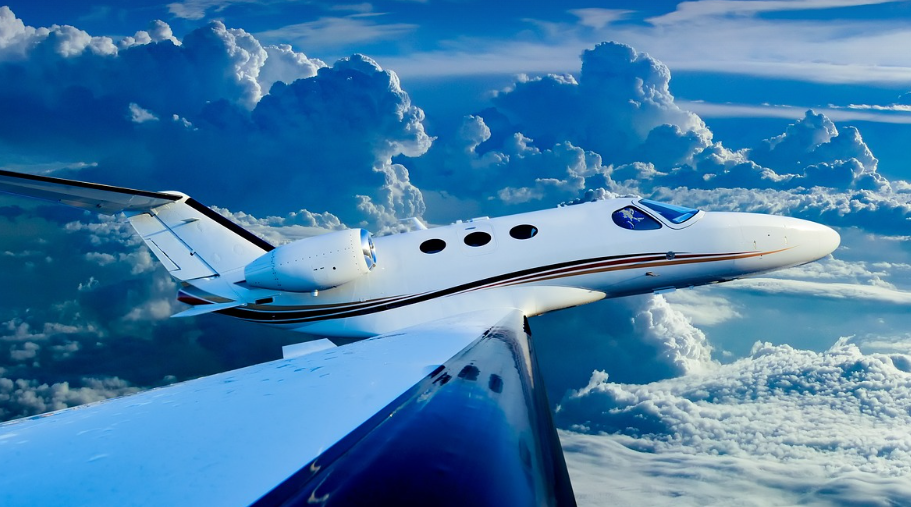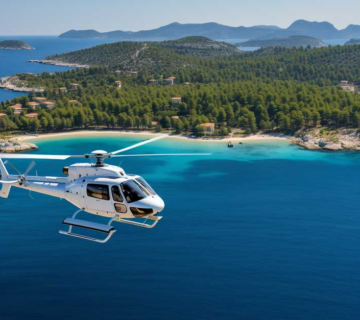In the 1960s, private jets revolutionized the way people traveled, offering an unparalleled level of comfort and privacy. As demand grew, manufacturers began to innovate, creating sleek and powerful aircraft that catered to the elite clientele. The emergence of iconic models like the Learjet and Gulfstream paved the way for a new era in private aviation, setting the stage for even more advanced and luxurious jets to come
The evolution of private aviation flourish beyond the introduction of the Learjet 23 and Dassault Falcon 20. As the industry expanded, manufacturers sought to innovate and push boundaries to meet the growing demands.
The American Vanguard: Learjet 23 introduced in 1964 by American entrepreneur William P. Lear, the Learjet 23 was the first purpose-built private jet. It offered unparalleled speed and privacy, setting the standard for business jets. The launch of the Learjet 23 not only ignited the private jet market but also established the Learjet brand as an industry icon.
Europe Enters the Stage: Dassault Falcon 20
A year later, in 1965, Europe made its entrance with the Dassault Falcon 20. Designed by the French company Dassault Aviation, this mid-sized business jet was conceived from the ground up for private aviation. It quickly gained international acclaim for its engineering and performance.
These foundational years laid the groundwork for a dynamic and rapidly evolving industry, where speed and privacy were no longer just luxuries but integral features that set the standard for decades to come. Other models, like the Cessna Citation series introduced in the following years, continued to shape the landscape of private aviation, each bringing unique capabilities and technological advancements to meet the diverse needs of jet-setters worldwide.
The evolution of private aviation continued to gain momentum in the 1970s and 1980s, with significant milestones shaping the industry. One noteworthy development during this period was the introduction of cutting-edge avionics systems that enhanced navigation and communication capabilities for private jet users. This technological leap not only improved flight safety but also opened up new possibilities for long-distance travel. Additionally, the 1980s saw the rise of luxury amenities on private jets, catering to the discerning tastes of elite passengers seeking ultimate comfort and convenience while flying. From spacious cabins with plush interiors to state-of-the-art entertainment systems, private aviation in this era redefined luxury air travel. The amalgamation of innovation, comfort, and performance set the stage for a new era in private jet travel, paving the way for the modern-day private aviation industry as we know it.
In the 1990s and early 2000s, the private aviation industry continued its evolution with advancements in technology, design, and market trends. One notable development during this period was the rise of fractional ownership programs, allowing individuals and businesses to purchase partial ownership of private jets, providing more flexibility and cost-effectiveness.
As the demand for private jet travel grew, manufacturers focused on enhancing comfort and luxury onboard. Innovations such as larger cabin spaces, improved entertainment systems, and state-of-the-art amenities became standard features in new aircraft models.
Furthermore, the 1990s saw the emergence of super-midsize jets like the Bombardier Challenger 300 and the Cessna Citation Sovereign, offering a balance of performance, range, and cabin comfort. These aircraft catered to a growing segment of travelers seeking a blend of speed and spaciousness for long-haul flights.
The early 2000s marked a period of increased environmental awareness in the private aviation sector. Manufacturers began developing more fuel-efficient engines and exploring sustainable aviation technologies to reduce carbon emissions and minimize the industry’s environmental footprint.
Overall, the 1990s and early 2000s witnessed a transformation in private aviation, characterized by technological innovation, luxury enhancements, and a growing emphasis on sustainability, setting the stage for further evolution in the years to come.
In the years that followed, the private aviation industry continued to thrive and evolve, making significant strides in innovation and sustainability. One key trend that emerged during this period was the development of more fuel-efficient engines and sustainable aviation technologies. These advancements were crucial in reducing carbon emissions and minimizing the environmental impact of private jet travel.
Moreover, manufacturers and designers focused on enhancing the passenger experience by incorporating cutting-edge technologies and luxurious amenities on board. Features such as advanced entertainment systems, spacious cabin layouts, and state-of-the-art comforts became standard in new aircraft models, catering to the evolving needs and preferences of discerning travelers.
The early 2000s also witnessed the introduction of sleek and efficient super-midsize jets like the Bombardier Challenger 300 and Cessna Citation Sovereign, offering a perfect balance of performance, range, and comfort for long-distance journeys. These aircraft appealed to a growing segment of travelers looking for speed, style, and space in their private jet experience.
As the private aviation industry entered a new era of environmental consciousness and technological innovation, it laid the foundation for further advancements and enhancements in the years to come. The 1990s and early 2000s were truly transformative years for private aviation, shaping the industry’s future trajectory towards sustainability and excellence.
The advancements in private aviation technology offer a glimpse into a future where air travel is not only more efficient but also more sustainable and personalized. From Vertical Takeoff and Landing (VTOL) aircraft like the CityAirbus NextGen prototype to the possibility of autonomous flight, the industry is on the cusp of a revolution. With a strong focus on sustainability initiatives, such as the development of electric jets that produce zero emissions, private aviation is moving towards a greener future. Moreover, the emphasis on customisable experiences, including AI-driven in-flight service and tailored travel itineraries, promises to transform the private jet experience into something truly extraordinary and unique for each passenger. The future of private aviation is not just about luxury and convenience; it’s about innovation, sustainability, and personalization coming together to shape a new era of air travel.







